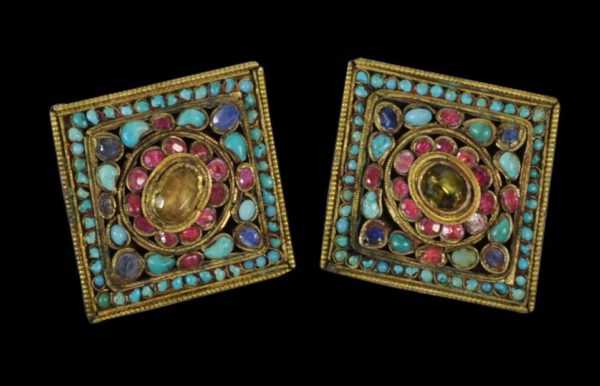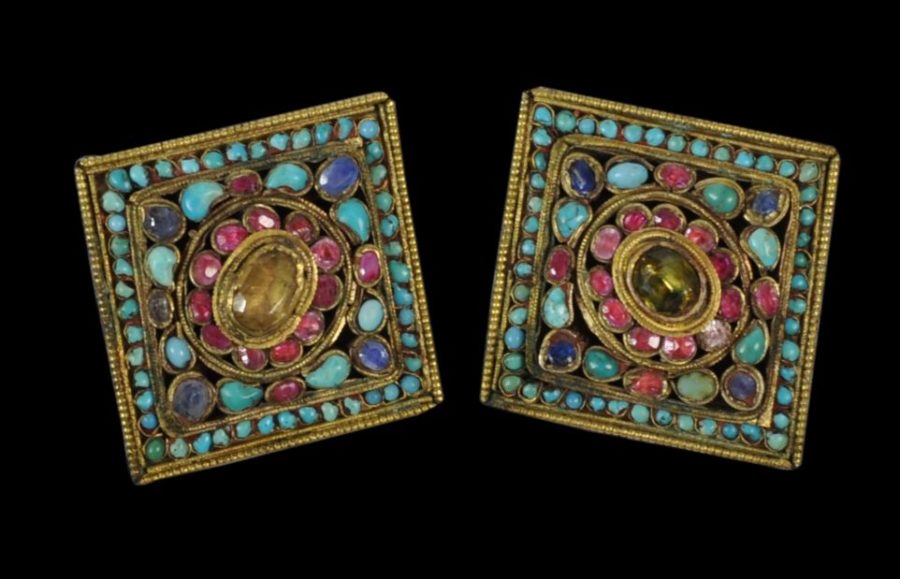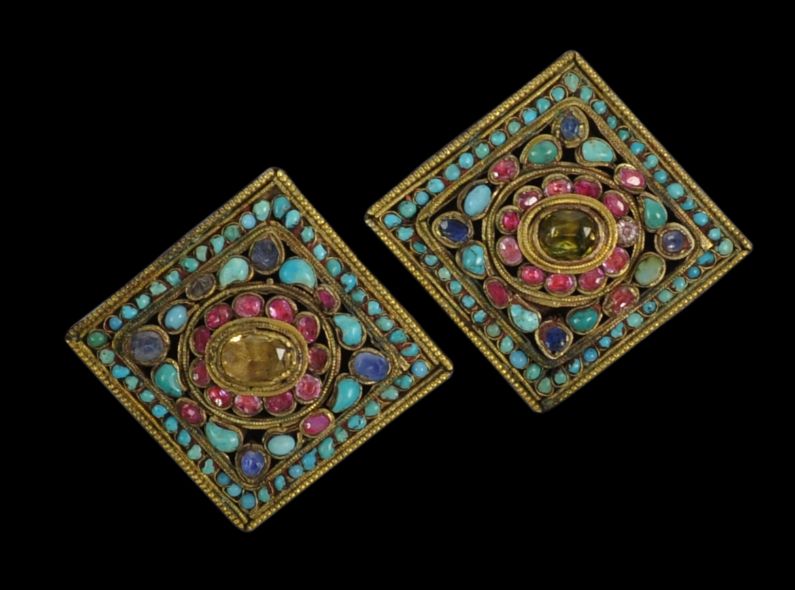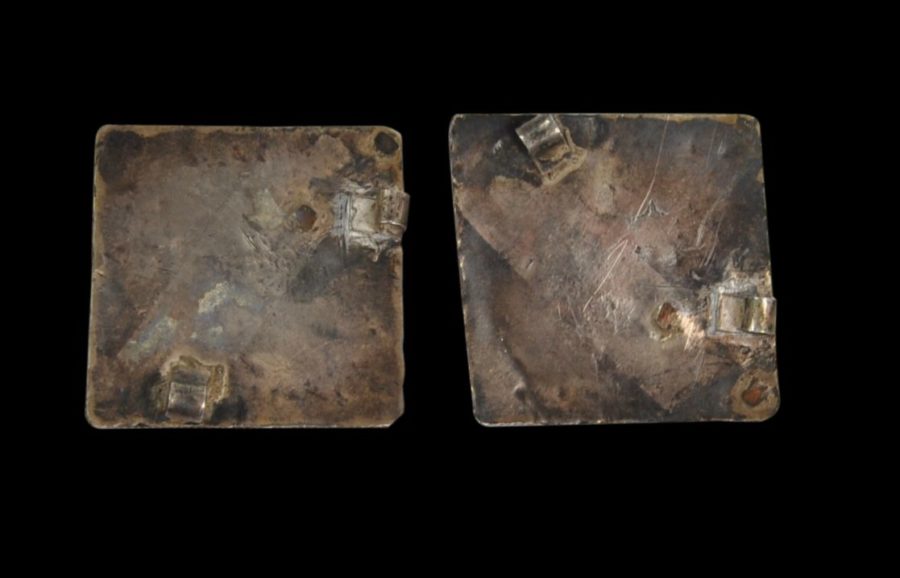This superb pair of ear ornaments, decorated with semi-precious stones using jarao work and in parallelogram form, was designed to decorate the ears of a religious statue most probably in a temple or monastery.
The ornaments are made of high-grade silver that has been gilded (gold-plated) on the front (and left un-gilded on the reverse) and inlaid with a mixture of turquoise, rubies or pink sapphires, blue sapphires and topaz. The stones are either in cabochon form or roughly faceted. They are further decorated with an edging of pearled wire.
They date to the 18th or 19th centuries and were made most probably by a Newari craftsmen either for a Nepalese or a Tibetan client.
According to Clarke (2004, p. 113) jarao work is a distinctive form of stone inlay decoration used by Newari craftsmen in the Kathmandu Valley. Its use was most prevalent in the 18th and 19th centuries although it appears on items from Nepal as early as the 12 century. It involves the use of a network of cloisons formed from strips of wire or metal sheet to hold the stones, typically in combination with spiral filigree or pearled wire elements.
The ear ornaments are in excellent condition.
References
Clarke, J., Jewellery of Tibet and the Himalayas, V&A Publications, 2004.
Ghose, M. (ed.), Vanishing Beauty: Asian Jewelry and Ritual Objects from the Barbara and David Kipper Collection, Art Institute of Chicago, 2016.





